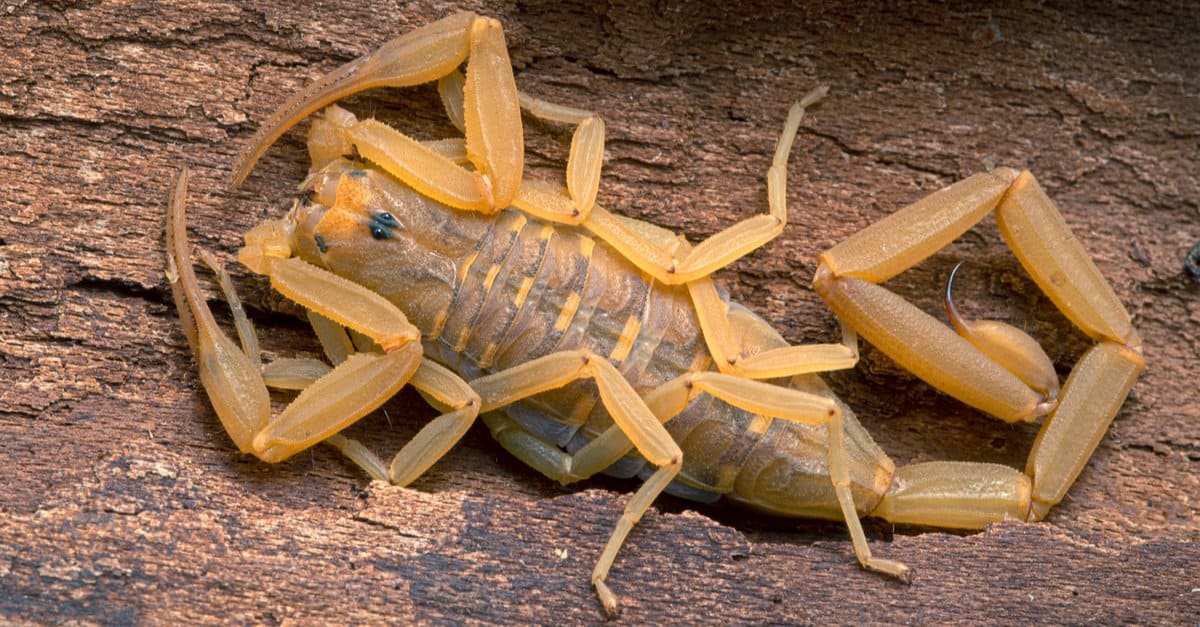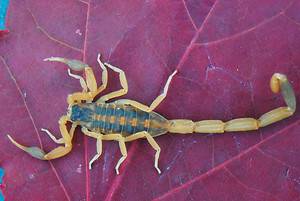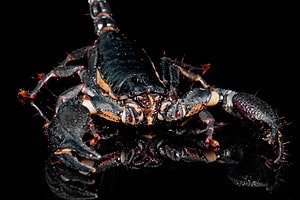In the wild landscapes of North America, a mysterious and formidable creature lurks in the shadows: the continent’s largest scorpions! With their menacing look and venomous stings, these mysterious arachnids have long piqued the interest of both scientists and intrepid explorers.
The largest scorpions in North America are fascinating subjects of research due to their busy lifestyle and distinctive adaptations. These arachnids have carved themselves a place in the environment everywhere from the arid lands of Arizona to the mountainous ranges of California. They rule over their domain with precision and subtlety.
We will dig into the fascinating world of the biggest scorpions in this article and learn about their physical characteristics, hunting strategies, and life cycle. Understanding their ecological significance is essential for preserving the fragile balance of the North American wilderness, even though their presence may cause anxiety to some.

Largest Scorpions: Are There Any Enormous Scorpion Species in North America?
There are no massively large scorpions in North America. While the continent is home to various scorpion species, none reach the enormous sizes found in other regions, such as Asia or Africa. The largest species in North America, the giant desert hairy scorpion, typically measure up to six inches in length. This makes them relatively modest in size compared to their global counterparts.
These creatures play essential roles in their respective ecosystems, preying on insects and other small arthropods. Despite not being massively large, they still command attention with their unique appearance and hunting techniques. Nonetheless, for those seeking to encounter truly giant scorpions, other parts of the world remain the destination of choice.
1. Giant Desert Hairy Scorpion
The magnificent scorpion species known as the giant desert hairy scorpion (Hadrurus arizonensis) attracts attention with its size and look. This powerful species, which is predominantly in the arid areas of the American Southwest, has adapted successfully to the hard desert environment. This makes it an interesting subject of research for experts and a source of attraction for interested spectators.
Size and Appearance
The giant desert hairy scorpion, as its name indicates, is quite large. One of the biggest scorpion species in North America, adult specimens may grow up to six inches in length. Its distinctive appearance adds to its allure. The exoskeleton of the scorpion has bristles or “hairs” coating it, giving it a rough and menacing look. These bristles help the scorpion detect possible predators and prey by helping it perceive vibrations.
Physical Attributes
The huge desert hairy scorpion possesses additional physical traits that aid in its adaptation to living in the desert in addition to its intimidating size. Its two main body components are the cephalothorax (head and thorax) and the abdomen. It has broad pedipalps at the front of its body that serve as sensing organs and powerful claws for catching prey.
Habitat
The giant desert hairy scorpion resides mostly in American Southwest deserts, which include sections of Arizona, California, Nevada, and Mexico. These creatures like rocky or sandy terrains so they may burrow into the ground during the day to avoid the oppressive heat. Then, they come out at night to search for prey. They may hide during the day and emerge during the night. Dry grasslands, scrublands, and desert environments are common places to find them.
Hunting Techniques
Despite their formidable appearance, giant desert hairy scorpions are relatively passive creatures that use their hunting skills rather than aggressive behavior to secure their prey. As nocturnal hunters, they rely on their keen sense of touch and vibration detection to locate potential meals. When they detect prey, such as insects, spiders, or small lizards, they employ their large pedipalps to swiftly grasp and immobilize their victims. Once they subdue the prey, the scorpion uses its venomous tail stinger to inject paralyzing venom, allowing it to feed at leisure.
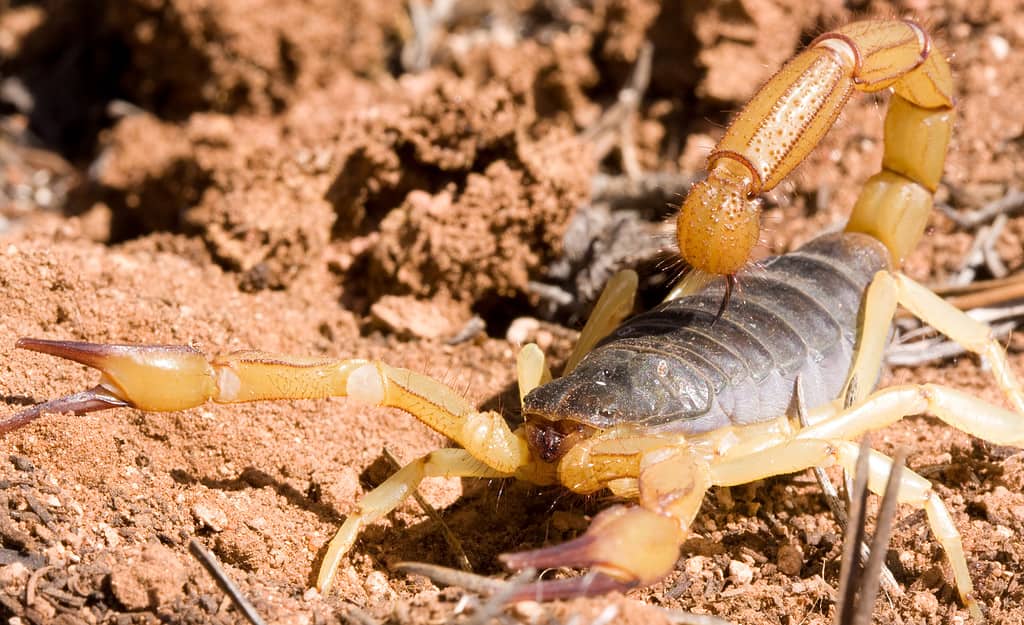
The giant desert hairy scorpion is widely considered to be the largest native scorpion species in North America.
©Dave Rock/Shutterstock.com
2. Emperor Scorpion
The emperor scorpion (Pandinus imperator) is a majestic and enigmatic arachnid known for its impressive size and captivating appearance. Native to West Africa but found in the pet trade around the world, including in North America, this fascinating creature has long intrigued scientists and nature enthusiasts alike with its unique physical attributes and hunting techniques.
Size and Appearance
The emperor scorpion holds the title of being one of the biggest scorpions in the world. Adult individuals can reach lengths of up to eight inches, making them an awe-inspiring sight to behold. Their exoskeleton shines with a glossy black hue, accentuated by a faint blue tint that adds to their allure. The powerful pincers at the front of their body, called pedipalps, are in use for both sensing their environment and capturing prey.
Physical Attributes
In addition to its extraordinary size, the emperor scorpion has several morphological characteristics that help it fit in well with its rainforest home. The cephalothorax, which houses the head and thorax, and the lengthy, segmented abdomen make up its two primary body parts. This species is distinguished by the pectines, comb-like projections on its abdomen that help it sense its surroundings and spot prey.
Habitat
The emperor scorpion lives in West Africa’s lush rainforests and tropical savannas. They are also pets throughout North America. High humidity and stable temperatures in rainforests and tropical areas make them ideal habitats for this large scorpion. They frequently seek refuge from the intense sunshine throughout the day by hiding beneath rocks, logs, or in leaf litter on the forest floor.
Hunting Techniques
As nocturnal hunters, emperor scorpions are well-adapted to the darkness of the rainforest nights. They employ their powerful pincers and an acute sense of touch to detect and grasp their prey. While insects, spiders, and other arthropods make up the majority of their diet, they also feed on small vertebrates when the opportunity arises.
Despite having venom in their stinger, these animals are typically not thought to be deadly to people. Instead of being utilized for defense, its venom is largely employed to paralyze and control prey. However, when in danger, a scorpion may lift its tail and flash its stinger as a warning. As a defense against prospective predators, they may also exude a “dry sting,” a mildly venomous fluid.
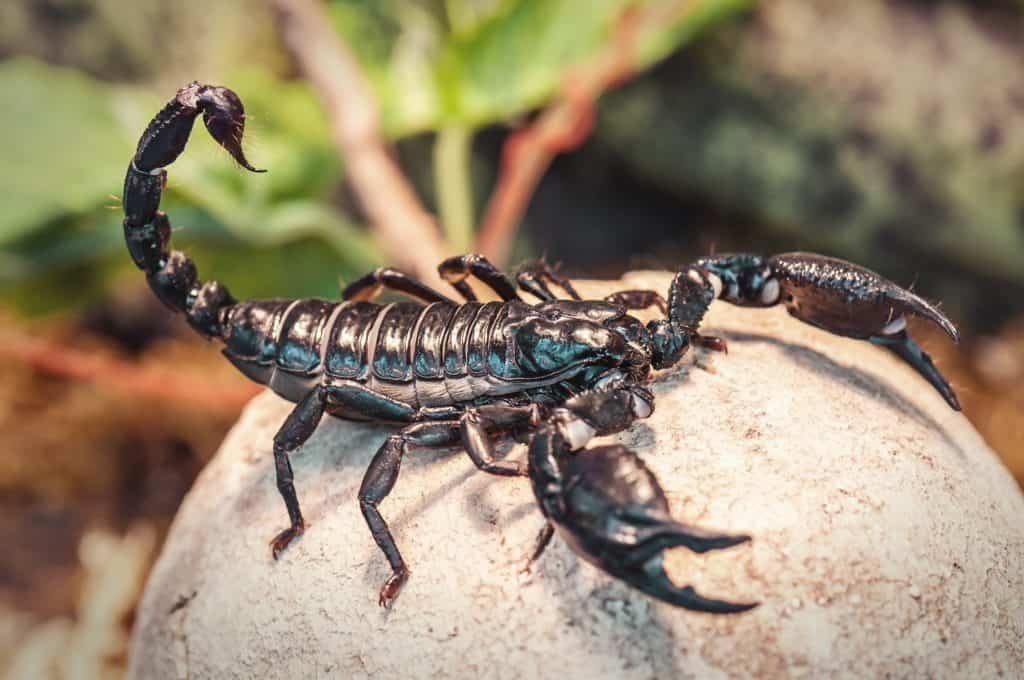
Emperor scorpions are known for their distinctive black color.
©Vova Shevchuk/Shutterstock.com
3. Stripe-Tailed Scorpion
The intriguing arachnid species known as the stripe-tailed scorpion (Paravaejovis spinigerus), commonly referred to as the devil scorpion, is located in the desert areas of the southwestern United States and Mexico. This scorpion has done a good job of adapting to life in the desert because of its sleek look and effective hunting methods.
Size and Appearance
The stripe-tailed scorpion is still on the bigger side despite being smaller than some of the other scorpion species on our list. Despite its smaller size, it stands out from other scorpions thanks to its unique look. The black stripe that runs over the top of its thin, elongated abdomen is what gives this species its name. Its color ranges from light yellow to reddish-brown and the front of its body has well-developed pincers.
Physical Attributes
The cephalothorax and a segmented abdomen make up the two major body segments of the stripe-tailed scorpion, as they do all other scorpion species. It has eight legs, like other scorpions, with the front two serving as sensing organs. Just as well, it has a stinger at the end of its tail that it uses to inject venom into its target to immobilize it.
Habitat
The stripe-tailed scorpion may thrive in a variety of dry environments. It may be found in a range of desert environments, including rocky outcrops, dunes, and desert grasslands. These creatures are generally nocturnal, hiding down throughout the day in tunnels or behind rocks to escape the sweltering desert heat. They go out at night to seek out prey.
Hunting Techniques
As skilled predators, stripe-tailed scorpions employ several hunting techniques to secure their meals. Like most scorpions, they are opportunistic carnivores, feeding on insects, spiders, and other small arthropods. Their keen sense of touch and vibration detection allows them to locate potential prey, even in complete darkness.
When a suitable victim is detected, the scorpion utilizes its well-developed pincers to grasp and immobilize the prey. It then delivers a quick and precise sting with its venomous tail, paralyzing the unfortunate victim. The venom not only subdues the prey but also begins the process of digestion, as it contains enzymes that break down tissues for easier consumption.
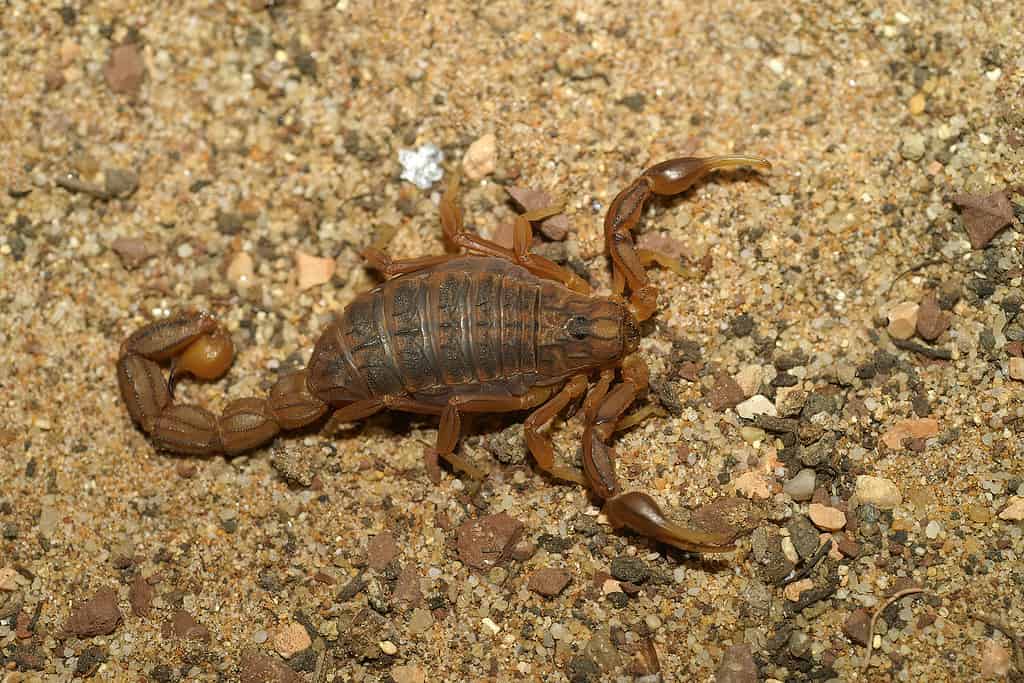
This species of scorpion can grow to be up to three inches long.
©iStock.com/Wirestock
4. Arizona Bark Scorpion
The Arizona bark scorpion (Centruroides sculpturatus) is a notorious arachnid species found in the desert regions of the southwestern United States and northern Mexico. Known for its venomous sting and nocturnal habits, this scorpion has adapted well to its harsh desert environment.
Size and Appearance
The Arizona bark scorpion is a relatively small scorpion species compared to others on this list, but it’s still worth mentioning. Adults average around three inches in length. Its appearance is unique and easily distinguishable from other scorpions. It has a slender, elongated body with a pale yellow or light brown coloration. Notably, its legs and pincers are lighter in color compared to the rest of its body.
Physical Attributes
The Arizona bark scorpion possesses several physical attributes that contribute to its survival in the desert environment. Its exoskeleton is hard and chitinous, protecting predators and environmental hazards. Like all scorpions, it has eight legs, with the front pair functioning as sensory organs. Its segmented tail curves upwards and ends in a venomous stinger, which is used to inject venom into its prey.
Habitat
As the name suggests, the Arizona bark scorpion is commonly found in the state of Arizona in the United States, along with parts of California, New Mexico, Nevada, and northern Mexico. It is well-adapted to arid regions, preferring rocky areas, crevices, and the bark of trees for shelter during the day. The scorpion seeks refuge from the harsh daytime heat and emerges at night to hunt for food.
Hunting Techniques
The Arizona bark scorpion is a skilled nocturnal hunter with a preference for insects and other arthropods as its primary food source. It relies on its keen sense of touch and vibration detection to locate potential prey, which it can detect even in complete darkness.
When a suitable meal is detected, the scorpion uses its powerful pincers to grasp and subdue the prey. Its venomous stinger then delivers a potent neurotoxic venom, which paralyzes the victim and initiates the process of digestion. The venom breaks down the prey’s tissues, making it easier for the scorpion to consume.
The Arizona bark scorpion’s venom is of concern to humans, as its sting can cause intense pain, swelling, and other localized symptoms. While generally not life-threatening to healthy adults, young children, the elderly, or individuals with allergies may experience more severe reactions. Due to its potentially harmful effects, encounters with the Arizona bark scorpion warrant caution and respect.
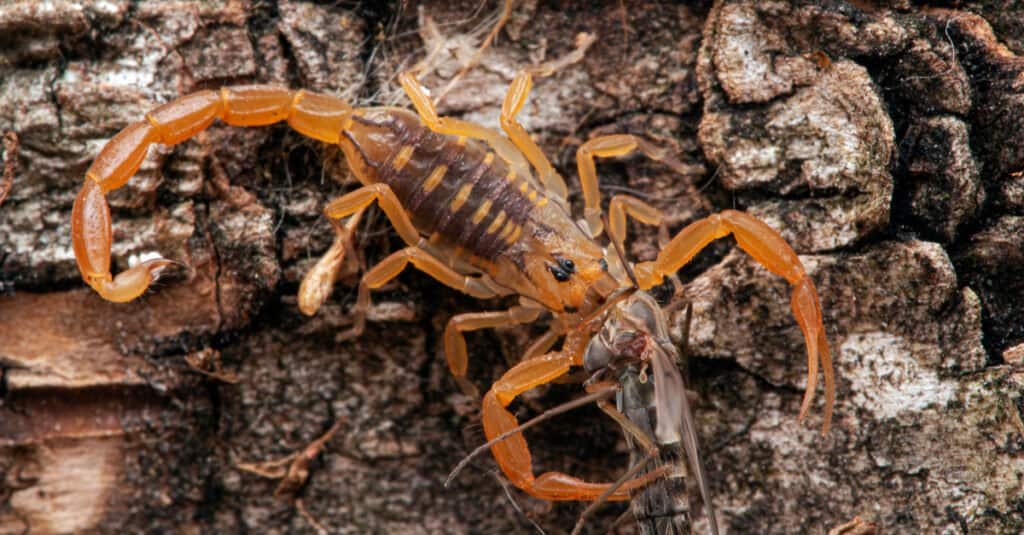
Arizona bark scorpions are known for their particularly intense venom.
©Ernie Cooper/Shutterstock.com
5. Florida Bark Scorpion
The Florida bark scorpion (Centruroides gracilis) is a lesser-known but intriguing arachnid species. It is found in the southeastern United States, particularly in the state of Florida. Despite its inconspicuous nature, this scorpion possesses unique characteristics that make it a fascinating creature in its native habitat.
Size and Appearance
The Florida bark scorpion can easily reach four inches in length. Its appearance is similar to other scorpions, featuring a flattened, elongated body with eight legs and distinctive pincers at the front. The scorpion’s coloration varies from light brown to dark reddish-brown, allowing it to blend effectively with its surroundings.
Physical Attributes
The Florida bark scorpion exhibits physical attributes that contribute to its survival in its chosen environment. Its exoskeleton provides a protective layer, shielding it from predators and harsh weather conditions. Its segmented tail, ending with a venomous stinger, allows the scorpion to deliver its potent venom to incapacitate its prey.
Habitat
As the name suggests, the Florida bark scorpion is primarily found in the state of Florida. It is specifically found in the southern and central regions. It also extends its range to parts of Georgia and Alabama. This scorpion prefers warm and humid environments, often inhabiting wooded areas, palm groves, and gardens. It seeks shelter under rocks, logs, and tree bark during the day. Like most scorpions, it becomes active at night to hunt for food.
Hunting Techniques
The Florida bark scorpion is a nocturnal predator, preying on small insects and arthropods. It relies on its keen sense of touch and vibration detection to locate potential prey in its dark and concealed habitat.
When the scorpion detects suitable prey, it uses its specialized pincers to grasp and immobilize the victim. Once the prey is subdued, the scorpion’s venomous stinger delivers a potent cocktail of toxins, including neurotoxins that paralyze the prey and begin the process of digestion. The venom breaks down the prey’s tissues, allowing the scorpion to consume its meal more easily.
Human Interaction and Sting
While the Florida bark scorpion’s venom is relatively mild compared to some other scorpion species, its sting can still cause discomfort and localized symptoms in humans. Most sting incidents result in pain, swelling, and redness at the site of the sting. However, severe reactions are rare, and the sting is not considered life-threatening to healthy individuals.

Florida bark scorpions have a unique, darker coloring than many other bark scorpion species.
©Ernie Cooper/Shutterstock.com
Summary of the Largest Scorpions Crawling America’s Deserts
| # | Scorpion | Location |
|---|---|---|
| 1 | Giant Desert Hairy Scorpion | Southwestern United States |
| 2 | Emperor Scorpion | West Africa, globally in the pet trade |
| 3 | Stripe-Tailed Scorpion | Sonoran Desert |
| 4 | Arizona Bark Scorpion | Arizona, United States |
| 5 | Florida Bark Scorpion | Florida, United States |
Thank you for reading! Have some feedback for us? Contact the AZ Animals editorial team.

